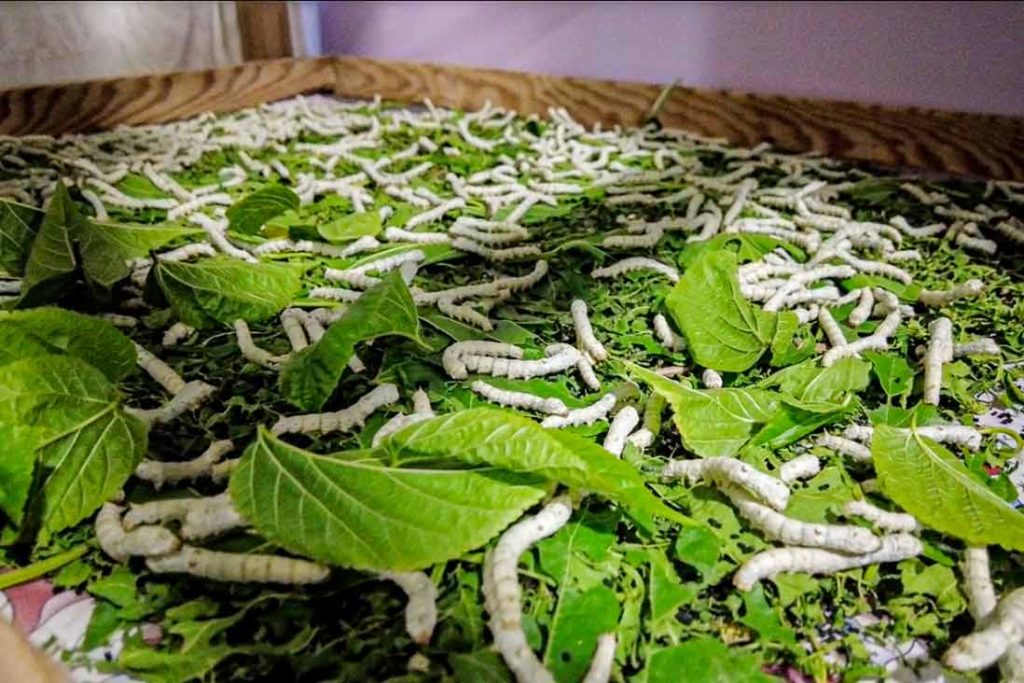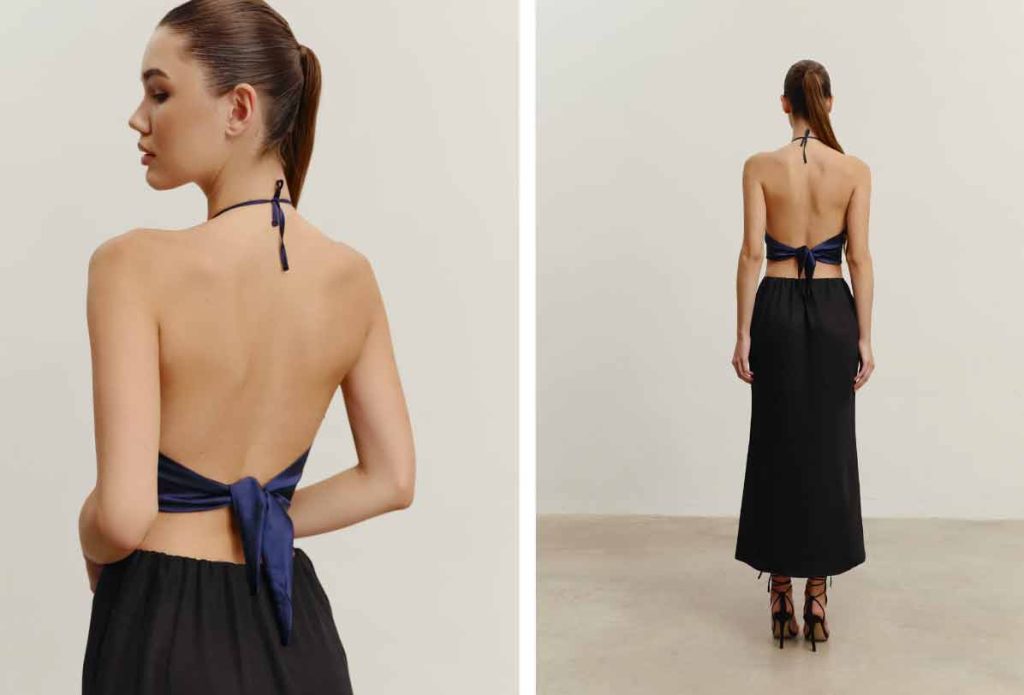19th Century Silk Dress from Present-day Uzbekistan, Bukhara (Photo Credit: The MET, Islamic Art collection, “Robe”)
SILK – a fabric steeped in legend, with tales of secrets and smuggling along the ancient Silk Road, now finds itself at the heart of modern controversy. Luckily, as a luxurious, durable, and biodegradable fabric, there are ways that we can prioritize the benefits of this fabric and leave the rest behind.
Early History & Expansion of Silk

Silkworm caterpillars feeding on leaves (Photo credit: Storyteller.com, IOM/Begüm Başaran)
Legend traces silk’s origins back to the Chinese empress Leizu around 3000 BCE, who, according to myth, discovered the fabric by chance as a silkworm’s cocoon fell into her tea. While the truth of this tale remains shrouded, silk undeniably began its journey in China, flourishing into a prized commodity for its luxurious feel and ability to hold vibrant color.
Silk’s expansion beyond China’s borders was spurred by the Silk Road, transforming it from a closely guarded secret to a global treasure. However, the production of silk remained largely a secret that only China held until around 550 CE, when the emperor of the Byzantine Empire convinced two monks to smuggle silk worms out of China. From those clandestine caterpillars grew the silk production of Europe. As a lightweight, vibrant fabric, it quickly became a status symbol, adorning the elite from Asia to Europe.
Today’s Ethical and Environmental Concerns in Silk Production

Silk Moth (Image by Dan Burchmore from Pixabay)
Contrary to the name silkworm, silk doesn’t originate from worms but from moths, who weave their cocoons out of these long silk fibers. Where the fibers would naturally be broken as the moth emerges from the cocoon, traditional silk production involves boiling or steaming the cocoons to kill the moth before it has a chance to emerge to preserve the long strands. The most common kind of silk is Mulberry silk, named after the tree the caterpillars feed on, and is typically processed this way.
This process is deemed unsustainable and unethical by some due to its impact on the silkworms. Raising silkworms also has a toll on the environment: silk production demands vast quantities of mulberry leaves, necessitating extensive land use, water consumption, and fertilizer application.
Weaving a Sustainable Future: Innovation and Alternatives

Eucalyptus silk dress from brand Green Cult (Image credit: theGreenCult.com)
In response to ethical and environmental concerns, alternative solutions are gaining popularity within the silk industry.
Ahimsa silk, or “peace silk,” refers to a process where silkworms are allowed to complete their life cycle naturally, albeit with a slightly rougher texture of the finished silk as the fibers are broken. Unfortunately, not every brand that claims to use peace silk is truly upholding these values, so it’s important to read about the individual brands to ensure. But, when followed, this process can benefit the moths. Additionally, organic silk ensures that the trees where the caterpillars grow are not treated with harmful chemicals that impact the environment and ecosystems around them.
Another alternative to traditional silk is semi-synthetic fabrics with silk-like properties. Made from eucalyptus fibers, these offer a cruelty-free, eco-friendly alternative. Produced through more sustainable processes, these fabrics, like lyocell or Tencel, maintain silk’s luxurious feel while minimizing the environmental impact.
By embracing these traditional silk alternatives and advocating for transparency and ethical practices throughout the supply chain, we can pave the way towards a more sustainable silk industry and ensure that silk can be enjoyed in harmony with our planet.
So, tell us, which future-forward silk are you excited to try out?
-------------------------------------
By: Jackie Warhime
Title: Silk Through Time – From Ancient Luxury to Modern Sustainability
Sourced From: www.universityoffashion.com/blog/silk-through-time-from-ancient-luxury-to-modern-sustainability/
Published Date: Sat, 25 May 2024 01:00:01 +0000
Read More
Did you miss our previous article...
https://edmmusic.news/fashion-clothing/move-over-hollywood-theres-a-new-act-in-town
 FestivalsMusicNew ReleasesArtistsFashion & ClothingVideosPrivacy PolicyTerms And Conditions
FestivalsMusicNew ReleasesArtistsFashion & ClothingVideosPrivacy PolicyTerms And Conditions
